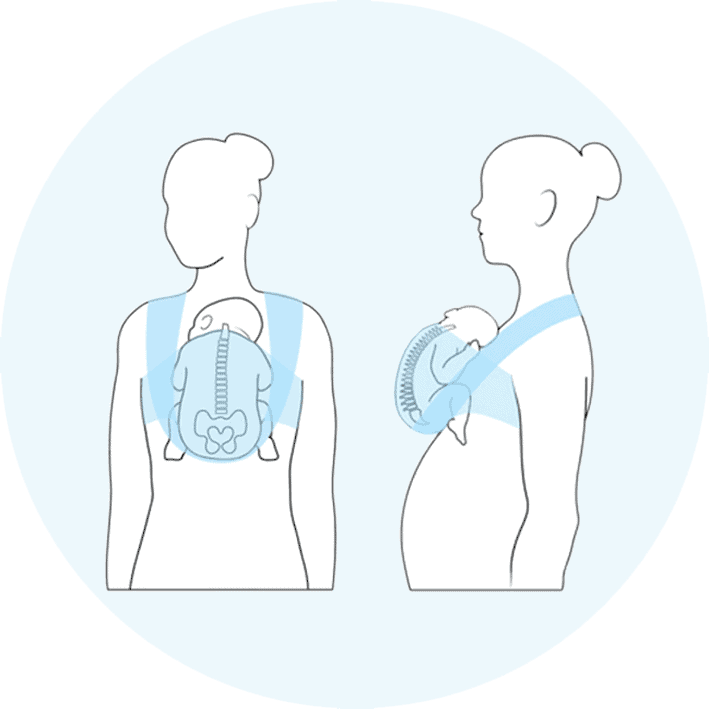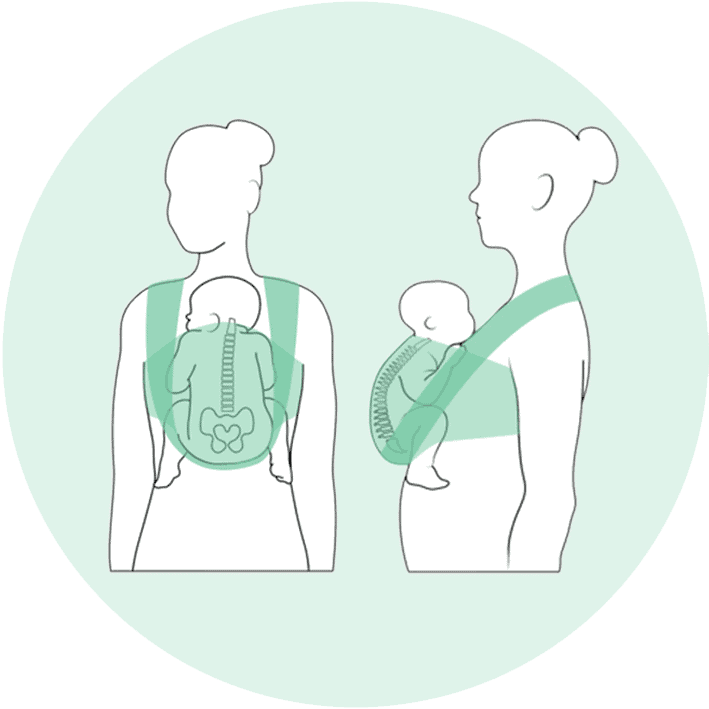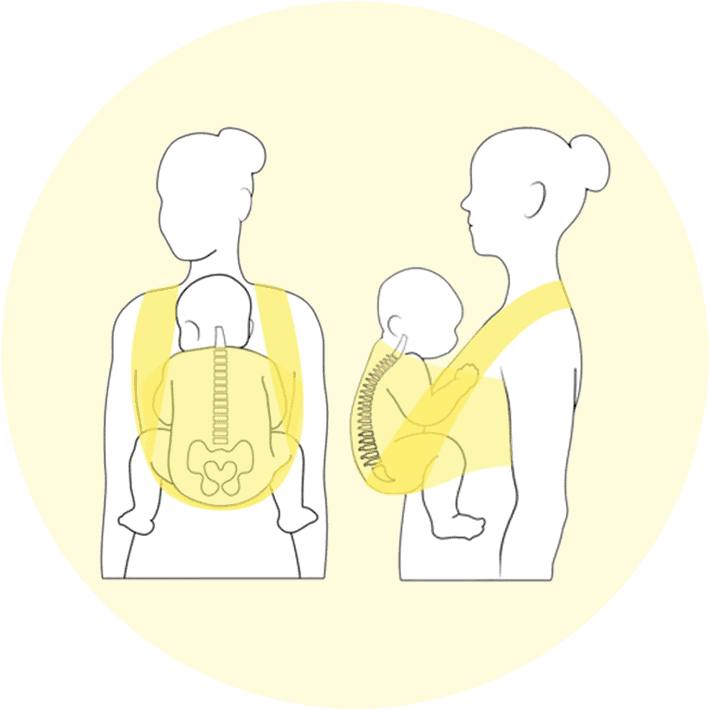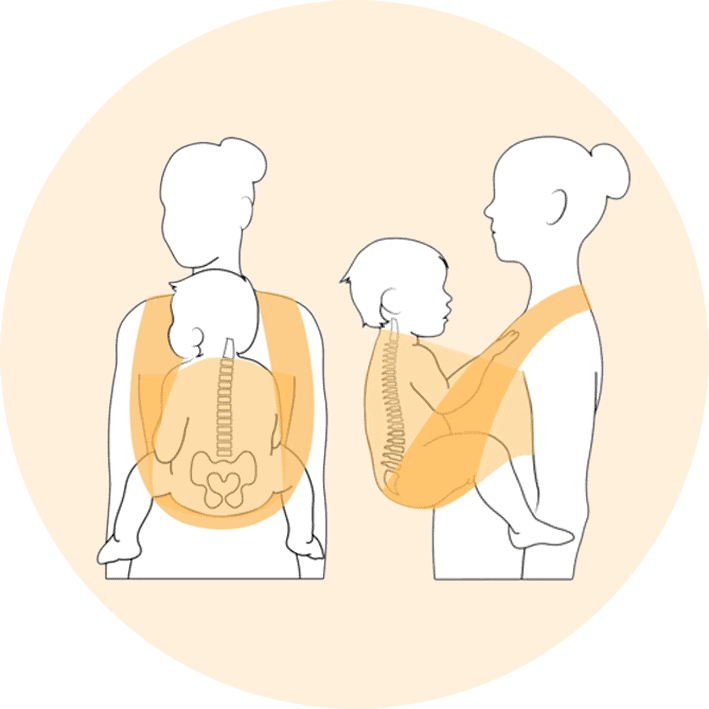Babywearing in the First Year
During you baby’s first year of life, many changes occur both physically and psychologically. In terms of babywearing, there is much to consider when it comes to choosing and using a carrier or carriers that is suitable for all of your baby’s developmental stages. Below is a diagram of the natural babywearing progression throughout baby’s first year of life.

Stage 1: 0-3 Months
Babies require the most support until they can hold their head up steadily. Their spine is in a state of total kyphosis and needs a carrier that will hold them firmly while offering support for their natural spine curvature. Muscles are still undeveloped along the spine, therefore a carrier with ideal support is needed so baby does not slouch while being worn. Ideal carriers for this stage are wraps and ring slings, since the wearer can customise it to fit baby’s unique size. Baby should be always worn on the front and facing in during this stage.

Stage 2: 3-6 Months
The cervical region, located at the uppermost part of the spine, begins to strengthen at 3-4 months when baby can firmly hold their head up. As a result, the curve of the spine (kyphosis) is beginning to straighten where eventually it will curve inward, known as lordosis. And though baby’s head control is stable and controlled, they still need sufficient support in the thoracic (middle spine) and lumbar (lower spine) regions. At this stage, baby can move on to hip carries, preferably using a ring sling or woven wrap for the most optimal support.

Stage 3: 6-9 Months
The middle area of the spine, known as the thoracic region, strengthens once baby can sit unassisted, typically occurring around 6-9 months of age. The muscles in this region help support baby’s back, and the spine remains rounded in thoracic kyphosis. When baby is sitting unassisted they are ready to be worn on the back as long as the wearer is comfortable doing so. Front outward facing carries are also able to be used at this stage providing the manufacturers guidelines are followed.

Stage 4: 9-12+ Months
The final stage is complete once baby begins to walk. During this stage, the lower back referred to as the lumbar region, becomes straightened and curves inward. This new curvature, called lumbar lordosis, completes the “S” shape of the spine. At this point, baby’s muscles are strong enough to hold up their entire back.
